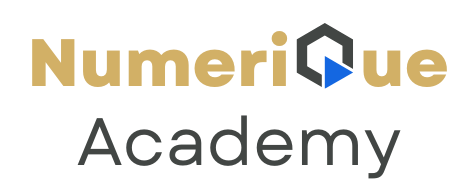So you’ve got an idea. Maybe it came to you in the shower. Maybe you sketched it on a napkin after a late-night coffee binge. Either way—you’re excited. But then the reality hits: starting a business isn’t cheap. At least, that’s what most people think.
Here’s the thing. You don’t need to drain your savings or max out your credit cards just to find out if an idea has legs. Validation—proving that people actually want what you’re offering—can be scrappy, fast, and low-cost. Think of it like dating before marriage. Test the waters before you commit.
Let’s walk through how you can do that without burning cash.
Step One: Talk to People
This sounds obvious, but most folks skip it. They sit alone, build fancy websites, maybe even order bulk inventory, and then realize no one cares. Painful.
Instead, go old-school. Call up friends, post in a group chat, or drop a poll on Twitter/Reddit. Ask questions like:
- “If this product existed, would you use it?”
- “What’s the most annoying problem you face when doing X?”
- “How much would you pay to solve it?”
Here’s a quick story: A friend of mine wanted to build an app for freelance designers. He assumed everyone needed it. Before spending a cent, he hopped on Zoom calls with 10 designers. Turns out, half of them were already using free tools that worked just fine. That one discovery saved him thousands in wasted effort.
Bottom line: conversations are free. And sometimes brutally honest.
Step Two: Create a Landing Page
You don’t need the full product. You just need a page that says what you’re offering, why it matters, and a button that says “Sign Up” or “Buy Now.” That’s it.
Here’s the deal—you’re not trying to trick people. You’re measuring interest. If 100 people land on your page and 25 click “Sign Up,” you’re onto something. If only two people click? Maybe back to the drawing board.
Tools like Carrd, Notion, or even Google Docs (yes, I’ve seen this work) cost next to nothing. You can slap together a page in a weekend. Add a clear headline, a short description, and one call-to-action. Done.
Think of it as a fishing line. If no one bites, at least you didn’t buy the whole boat.
Step Three: Test Demand Before You Build
This one’s sneaky but powerful. Instead of making the product, pre-sell it. Put up your landing page, run a tiny ad campaign (like $50 on Facebook or Google), and see if people are willing to pay.
Let’s be honest: “likes” and “follows” feel good, but they don’t pay bills. Cash does. Even if you refund pre-orders later, you’ll know people are serious.
One entrepreneur I know tested a digital course this way. She made a basic outline, threw it on a landing page with a “Pre-order now for $49” button, and shared it in a few groups. She got 40 sign-ups in a week. That was enough proof to finish the course. Without that? She might have wasted months making something no one wanted.
Step Four: Build the Scrappy Prototype
If people are biting, don’t rush into a polished version. Build what’s called an MVP (minimum viable product). In plain English: the cheapest, simplest version that does the job.
If it’s software, maybe it’s just a Google Sheet and some Zapier automations. If it’s physical, maybe it’s a handmade version, not factory produced. If it’s content, maybe you start with a free PDF before writing a 300-page book.
I like to think of MVPs as duct tape solutions. Ugly? Sure. But if people are still using them, that’s a strong signal you’ve got something real.
Step Five: Watch Behavior, Not Just Words
People lie. Not always on purpose—they want to be nice. They’ll say, “Yeah, I’d totally buy that!” But when the time comes? Crickets.
So don’t just trust what they say. Watch what they do. Are they signing up for your waitlist? Clicking “Buy Now”? Sharing it with friends? Actions are the ultimate validation.
One quick hack: add a “Reserve Your Spot” button even if the product isn’t ready yet. If people drop their email, you know they care at least enough to hear more.
Step Six: Keep Costs Ridiculously Low
Remember, this stage isn’t about scaling. It’s about testing. You don’t need custom logos, a trademark lawyer, or a warehouse filled with inventory. Keep expenses razor-thin until the demand is obvious.
Think in terms of experiments:
- $20 for a survey tool.
- $50 for ad testing.
- $10 for a domain name.
That’s way cheaper than a failed launch that costs thousands.
Things to Keep in Mind
- Don’t fall in love too fast. It’s tempting to think your idea is “the one.” Stay flexible.
- Be ready to pivot. Sometimes feedback points you to a totally different direction. That’s a win, not a loss.
- Don’t chase perfection. Validation is about quick and dirty. You’ll polish later.
Here’s something to think about: every big startup you admire—Airbnb, Uber, even Bitcoin wallets—started with a scrappy, half-broken version. They only scaled once people proved they actually wanted it.
Wrapping It Up
Validating a business idea doesn’t require deep pockets. It requires curiosity, creativity, and a bit of humility. Talk to real people. Put out simple tests. See if anyone bites. And if they don’t? That’s not failure—it’s tuition. You just saved yourself time and money.
At the end of the day, business is a giant experiment. The faster you test, the faster you learn. So don’t wait until it’s perfect. Start small. Start cheap. Just start.

